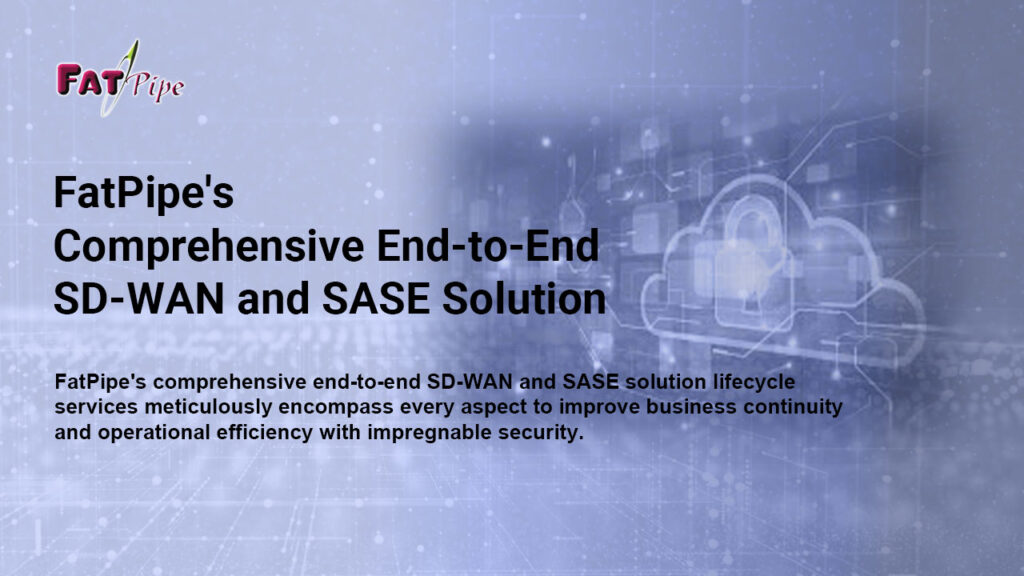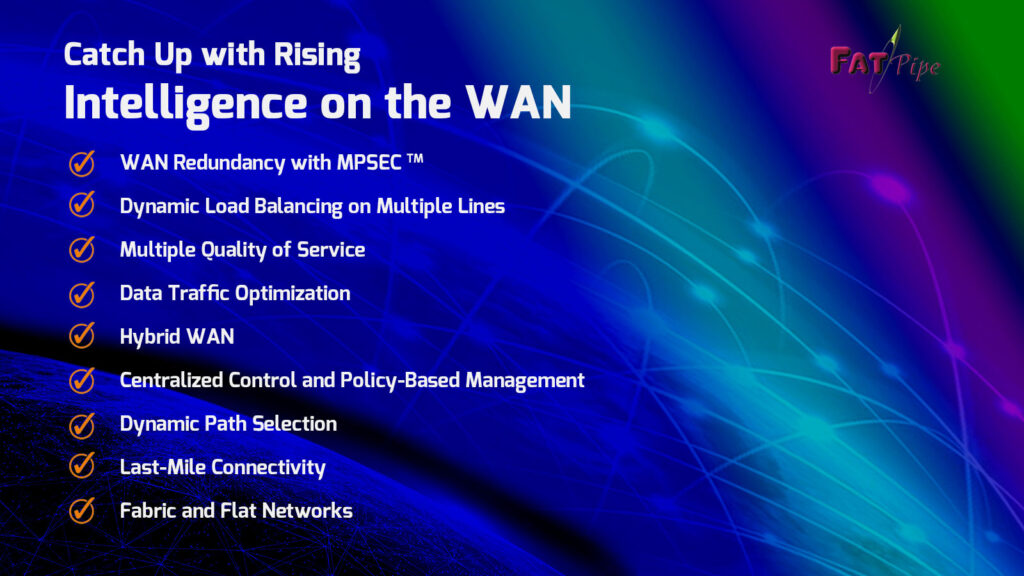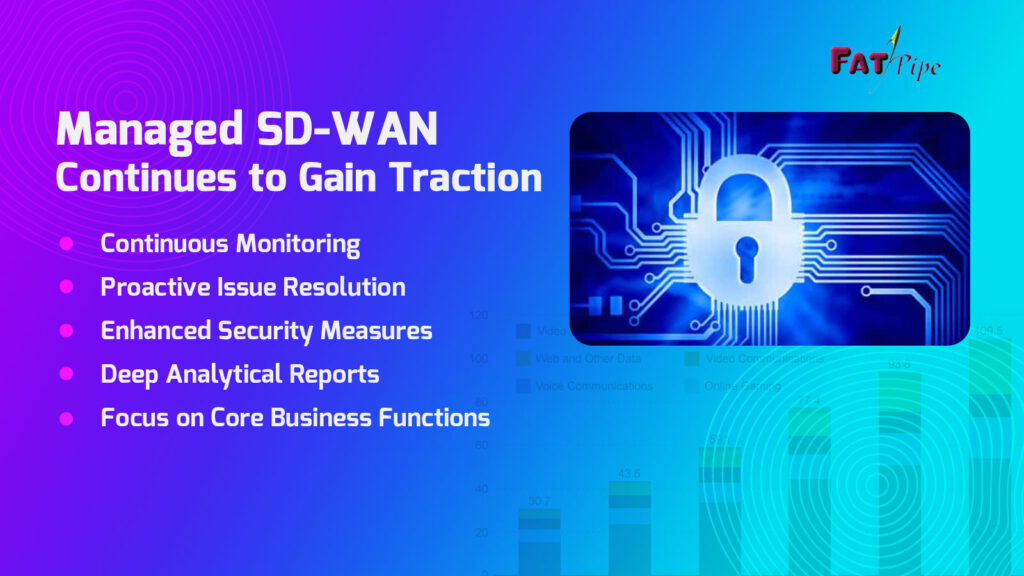FatPipe’s Comprehensive End-to-End SD-WAN and SASE Solution
Amidst the evolving challenges of remote work and branch connectivity, enterprises benefit from SASE, which integrates SD-WAN’s networking efficiency with a plethora of cloud security features, including zero trust network. As per research reports, by 2025, at least 60% of organizations will have explicit strategies and timelines for SASE adoption covering user, branch, and edge access. FatPipe unique technical cloud security features can help you accelerate the transition to the SASE architecture with tailored implementations that align with your organization’s unique needs.
SASE’s Vital Significance: Five Enterprise Use Cases
- A large enterprise has several employees working from home, connecting with colleagues and customers through various collaboration tools to perform their tasks. SASE ensures secure connections, enabling employees to collaborate seamlessly while protecting sensitive information to enhance productivity.
- An IT Services company needs to ensure secure and context-aware access for diverse user roles within its network infrastructure. SASE helps in providing a comprehensive security fabric with identity-based control and context awareness. IT professionals or user groups can be seamlessly associated with specific identities, enabling the organization to grant access tailored to roles, teams, or management hierarchies.
- Faced with the critical need to align its network with stringent financial regulations, a pharmaceutical company must enhance its security posture, particularly in adhering to data encryption standards. Leveraging the integrated security capabilities of SASE, including robust data encryption, the pharma company can achieve regulatory compliance expectations.
- A retail chain faces security risks as employees needed remote access to the company network while working from field and client offices. SASE offers a Zero Trust-based secure access solution, enhancing security by meticulously verifying identities and permissions before granting network access to remote employees.
- A developing tech start-up was challenged with scaling its network infrastructure after the emergence in the need of accommodating a rise in users and escalating data loads. SASE’s cloud-native architecture provides the ideal solution, enabling the start-up to effortlessly expand both its network and security capabilities in tandem with its rapid growth path.
A large organization with a complex network infrastructure can gain from the gradual deployment capability of SASE, which enables a seamless transition without disrupting ongoing operations. FatPipe SASE provides simple yet effective transformation methods with advanced blockchain type of secure data transmission, making it easier, modular, and granular to implement secure Edge. FatPipe’s comprehensive cloud security products include Secure Web Gateway, Threat Protection and Management, ZTNA, IDS/IPS, Firewall as a Service (FWaaS), etc.
FatPipe’s comprehensive end-to-end SD-WAN and SASE solution lifecycle services meticulously encompass every aspect to improve business continuity and operational efficiency with impregnable security.





